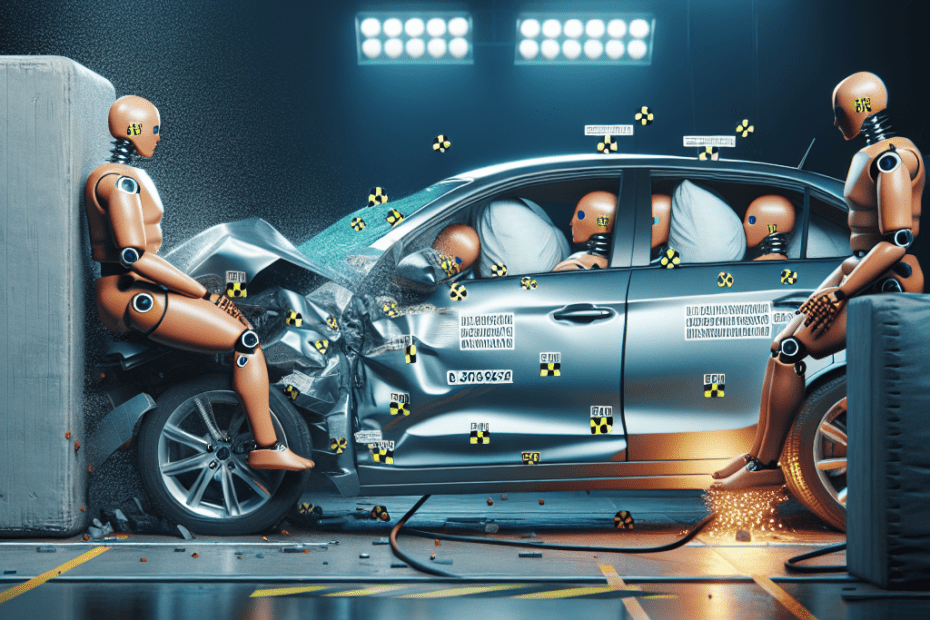“`html
Understanding Vehicle Crash Tests: How Safety Ratings Are Determined
When consumers purchase a new car, one of the crucial factors they consider is how safe it is. Vehicle safety ratings guide buyers by providing critical information about how well a vehicle protects its occupants in the event of a crash. These ratings result from comprehensive crash tests and analysis by various safety institutes. Understanding vehicle crash tests and how safety ratings are determined can empower consumers to make informed decisions about their vehicles.
The Importance of Vehicle Safety Ratings
Vehicle safety ratings play a significant role in helping consumers choose a vehicle that best protects them and their loved ones. These ratings are determined through rigorous testing conducted by organizations like the National Highway Traffic Safety Administration (NHTSA) and the Insurance Institute for Highway Safety (IIHS). Each organization evaluates different aspects of vehicle safety, including frontal crash tests, side-impact crash tests, and rollover resistance.
Types of Vehicle Crash Tests
Vehicle crash tests involve several types of evaluations to assess the safety of a car:
- Frontal Crash Tests: These tests simulate a head-on collision between two vehicles. They measure the car’s ability to protect the driver and passengers, primarily focusing on the airbags and the seatbelt systems.
- Side-Impact Crash Tests: These tests examine the safety of the vehicle in the event of a collision from the side, where protection might be weaker. The tests analyze the resistance of doors and side airbags’ effectiveness.
- Rollover Tests: These tests assess the vehicle’s likelihood of rolling over during sharp turns or abrupt maneuvers. NHTSA provides a rollover resistance rating out of five stars, with five stars indicating the lowest likelihood of rolling over.
How Are Safety Ratings Assigned?
Safety ratings involve complex calculations based on different crash test results. Each organization has its method of evaluating and presenting these ratings. The NHTSA awards star ratings, ranging from one to five stars, with five stars representing the highest safety rating for crash protection. The IIHS, on the other hand, assigns ratings of “Good,” “Acceptable,” “Marginal,” or “Poor” based on how well the vehicle performs in their stringent tests.
Key Organizations and Their Role
Several key organizations are responsible for conducting vehicle crash tests and providing safety ratings:
| Organization | Role |
|---|---|
| National Highway Traffic Safety Administration (NHTSA) | Conducts the New Car Assessment Program (NCAP) providing star ratings for vehicle safety. |
| Insurance Institute for Highway Safety (IIHS) | Performs various crash tests and awards ratings from “Good” to “Poor.” |
The Impact of Safety Ratings on Consumer Choices
High vehicle safety ratings can have a significant impact on consumer choices. According to a survey by the National Safety Council, 65% of consumers consider crash-test ratings as an important factor when purchasing a vehicle (nsc.org). Automakers are encouraged to improve safety features to ensure their vehicles receive the best ratings possible. This competition among manufacturers ultimately benefits consumers by promoting higher safety standards across the industry.
Key Takeaways
- Vehicle safety ratings are determined through extensive crash testing by organizations like NHTSA and IIHS.
- Different crash tests include frontal, side-impact, and rollover tests, each focusing on the vehicle’s ability to protect its occupants.
- Safety ratings influence consumer decisions, pushing automakers to improve vehicle safety standards.
Frequently Asked Questions (FAQs)
- What is the significance of a five-star safety rating?
A five-star safety rating indicates the best level of crash protection. Vehicles with this rating are considered highly safe.
- How does the IIHS rating system differ from NHTSA?
The IIHS uses ratings based on terms like “Good” or “Poor,” while the NHTSA uses a star-based system ranging from one to five stars.
- Do safety ratings affect car insurance premiums?
Yes, vehicles with higher safety ratings may qualify for lower insurance premiums as they pose a lower risk in accidents.
- Are crash tests conducted on all vehicle models?
Not all vehicles get crash-tested, but popular models typically undergo these evaluations to ensure consumer safety.
- How often are vehicle safety ratings updated?
Safety ratings are updated annually, or whenever new models and safety technologies become available.
Understanding vehicle safety ratings and crash tests empowers consumers to make informed decisions about their car purchases. Safety ratings not only provide insight into the vehicle’s protective features but also encourage automakers to prioritize safety in design and technology.
“`
